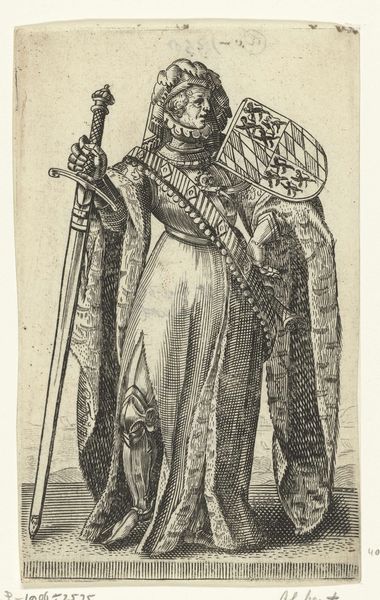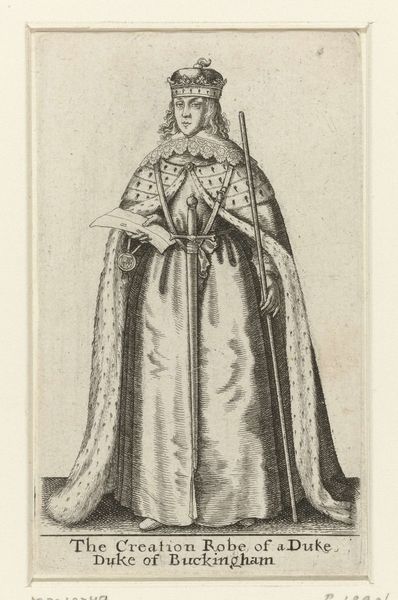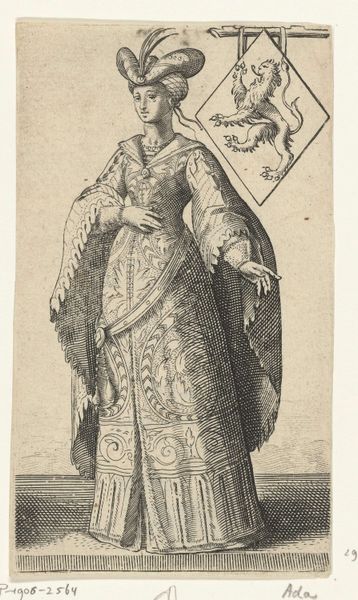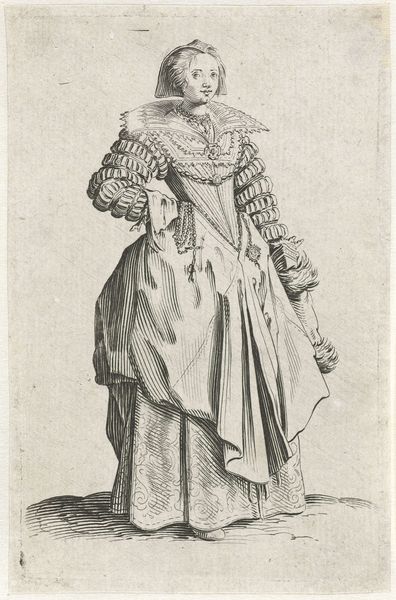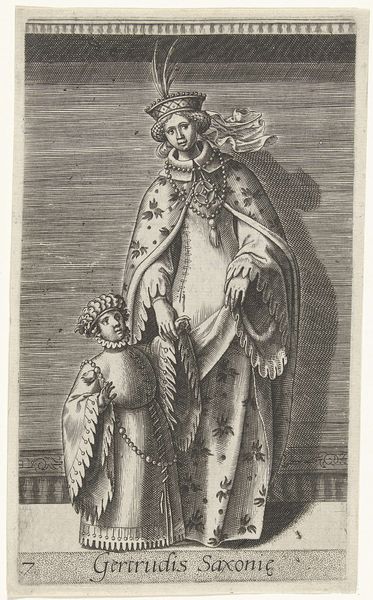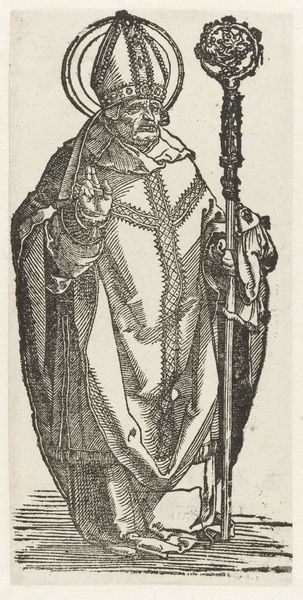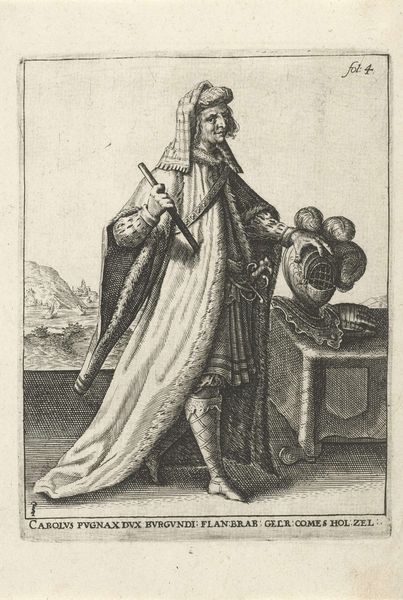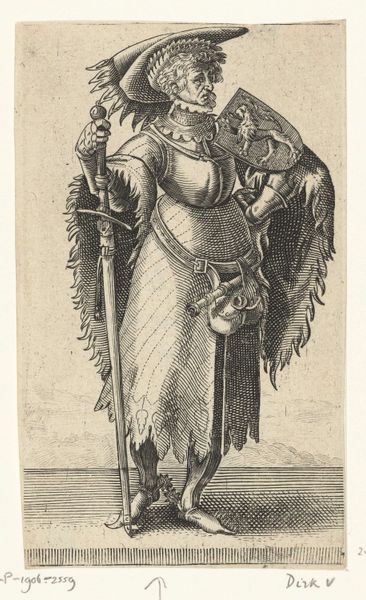
Portret van Albrecht van Beieren, graaf van Holland en Henegouwen 1578
0:00
0:00
philipsgalle
Rijksmuseum
print, engraving
#
portrait
# print
#
old engraving style
#
caricature
#
mannerism
#
portrait drawing
#
history-painting
#
engraving
Dimensions: height 206 mm, width 121 mm
Copyright: Rijks Museum: Open Domain
Editor: So, this is Philips Galle’s “Portret van Albrecht van Beieren, graaf van Holland en Henegouwen,” an engraving from 1578. It's currently held at the Rijksmuseum. The detail in the lines is incredible, though the overall impression feels a bit...stiff, almost like a caricature. How do you interpret this work? Curator: That stiffness you perceive speaks volumes, doesn’t it? This isn't simply a portrait; it's a statement of power constructed within very specific social and political circumstances. Think about the role of portraiture during this period. Who was being represented, and what message was the artist, or perhaps the patron, trying to convey? Albrecht van Beieren, Count of Holland and Henegouwen, is deliberately depicted with all the symbols of authority – the sword, the shield bearing his coat of arms. But look closer: the artist, Philips Galle, working in a time of immense religious and political upheaval, uses the mannerist style to negotiate complex ideological terrain. Do you notice anything about how the subject's body language challenges conventional portrayals of power? Editor: I see what you mean. The way he's posed seems almost…vulnerable? His stance is a bit awkward, and his expression isn’t commanding at all. Curator: Precisely. Consider the context of the Dutch Revolt. Galle, working in Antwerp, was navigating treacherous waters. The “stiffness” isn't just an aesthetic choice; it is a signifier, it speaks of tension. While ostensibly celebrating Albrecht’s status, there’s a subtle critique embedded here, wouldn’t you say? Could this awkwardness be a subversive comment on the instability of power, or perhaps the weight of responsibility? How do you think the intended audience at the time would have reacted? Editor: I hadn't considered the subversive element. I was focused on the artistic style, but now I see how historical and political context dramatically shift our understanding. Thank you! Curator: Indeed. Art becomes truly enriching when we allow it to speak to the past and the present. It is a lens through which to analyze and challenge normative cultural structures.
Comments
No comments
Be the first to comment and join the conversation on the ultimate creative platform.

